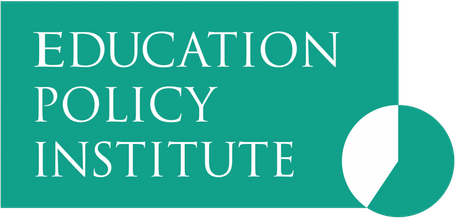‘Social risk taking in adolescence’ by Prof. Sarah-Jayne Blakemore

2020 Annual Lecture
During the Education Policy Institute 2020 Annual Lecture, Prof. Sarah-Jayne Blakemore, Professor of Psychology and Cognitive Neuroscience at the University of Cambridge, gave a lecture on ‘Social risk taking in adolescence’. The lecture presented the results of recent research and experiments on influence of peers on the behaviour of adolescents, here defined as young people aged ten to twenty-four, and shared ideas on how society and educational professionals should support them to tackle today’s challenges, starting with those of the ongoing pandemic.
The key takeaways from the lecture are that both environmental and biological aspects influence adolescents’ behaviour. Social risk avoidance and the influence of peers are important determining factors of an adolescent’s attitude towards risk. Adolescents appear to be hypersensitive to social exclusion which has a stronger effect on them than on adults in terms of development of anxiety and depression. Cyberball games, in which participants believe they are playing with other people whose profiles are instead controlled by the programmer, show indeed that adolescents tend to take different forms of risk in order to avoid the one of being excluded. Modern structural and functional MRI techniques have recently enabled the discovery that the brain undergoes very substantial and protracted development throughout adolescence. In particular, in this phase of its development, the brain is very plastic and sensitive to environmental experience and inputs. Neuroplasticity indicates the ability of the brain to modify its connections or re-wire itself. That would seem to confirm adolescents’ vulnerability to risk taking and mental health problems. However, brain’s high plasticity levels also represent a good opportunity for learning, intervention and rehabilitation, making it easier for adolescents to learn from mistakes, experiences and feedback than it is for adults.
Studies on schizophrenia and other mental health conditions show that most patients start to develop symptoms during adolescence, while early childhood traumas have proven to affect brain development both in terms of brain structure and functioning. Both factors can lead to the development of depression, anxiety and conduct problems. A significant amount of research has begun on adolescents’ brain development and risk-taking behaviours. The latter indeed currently represents the leading cause of mortality in people aged ten to twenty-four. Laboratory experiments involving driving simulations have shown the importance of peer influence on such risk-taking behaviours. The number of car accidents caused by adolescents is three times higher when carrying friends of a similar age in the car, with no similar observations on adults. Lisa Knoll’s study on 563 individuals aged eight to fifty-nine also provided robust and replicable findings on the social influence on risk perception. Young adolescents’ risk perception resulted to be more influenced by the perception of peers than individuals falling in any other age category.
Contrarily most assumptions made by neurosciences until twenty years ago, more recent research has proven that the brain does not stop changing in childhood. Robust findings from studies on structural brain development show that the human brain undergoes development throughout adolescence and early adulthood. In particular, after the age of eight/nine no more growth occurs in the size of brain, but changes in its internal composition continue to occur. Grey matter decreases on average by 15% during adolescence, while white matter increases linearly by around 1% per year during the same period. All the studies carried out so far take into account the average adolescent, but recognise the importance of the individual differences created by genetical and environmental factors in white and grey matters’ volumes. A big area of research is currently focusing on the hypothesis that specific trajectories of brain development might determine the development of certain mental health problems.
Both the environment they interact with and biological aspects influence adolescents’ behaviour. The implications of such findings for education, schools’ policies and discipline rules remain an open question, since scientific research on the matter has only developed over the last two decades and the related experiments in labs differ with respect to the classroom environment. However, there are some interesting examples in which new studies on adolescents’ brain development could drive changes in school policies. Research has shown that, during puberty, melatonin is produced in the brain some hours later than usual, so teenagers tend to be less tired at night and more in the morning. Schools should thus open one or two hours later to fit better with adolescents’ biological clock. School exclusion policies should also be reviewed, in order to avoid triggering a vicious cycle that makes the behaviour of those excluded being influenced only by peers falling in the same category. Studies on learning through reward and punishment has also shown that adults learn rather quickly via both reward and punishment incentives, while adolescents tend to be more sensitive to being rewarded than punished. The use of social isolation policies, which appear to be negative for brain development too, in cases of misbehaviour at school should thus be reviewed in light of these findings.
Finally, the ongoing COVID pandemic has increased the tendency to blame young people for not respecting social distancing behaviours. While the disruptive effects of lockdown and social distancing measures on adolescents have to be considered, there is no evidence that blaming and shaming have effects on them. The fact that adolescents are influenced by peers should instead stress the need to educate them about the reasons why such measures are in place. That would also allow them to run peers-led intervention campaigns. A study on peer-led anti-bullying interventions in fifty-six middle-schools has indeed shown that bullying was reduced by 25% more in those schools where campaigns were led by the most socially connected students rather than by teachers. Peer influence could thus also be exploited to generate positive diffusion effects.



